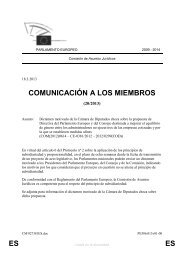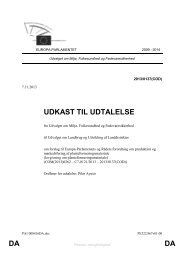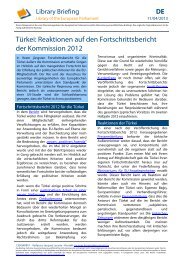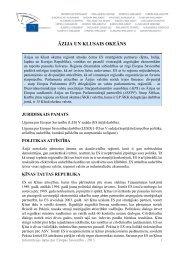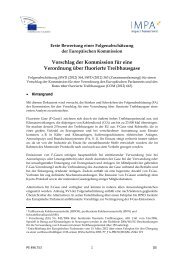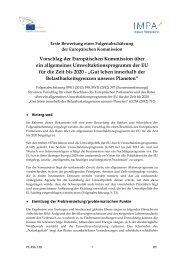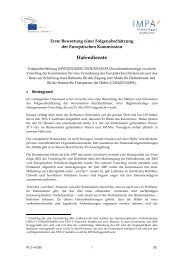Link to the study - European Parliament - Europa
Link to the study - European Parliament - Europa
Link to the study - European Parliament - Europa
You also want an ePaper? Increase the reach of your titles
YUMPU automatically turns print PDFs into web optimized ePapers that Google loves.
Nuclear Decommissioning: Management of Costs and Risks<br />
____________________________________________________________________________________________<br />
3. Owner type and organisation<br />
The basic distinction here is between private opera<strong>to</strong>r organisations such as private energy<br />
producing companies, and public owners on <strong>the</strong> federal or state level. As all of <strong>the</strong> three eastern<br />
<strong>European</strong> projects are public organisations, this type of organisations is better comparable. It<br />
would be scientifically interesting <strong>to</strong> discuss whe<strong>the</strong>r project organisation and management as<br />
well as experiences differ significantly under a private setting, but that comparison does not<br />
contribute much <strong>to</strong> <strong>the</strong> central task of this <strong>study</strong>.<br />
4. Decommissioning stage and level<br />
The selected examples shall be in an advanced stage of physical decommissioning so that<br />
advantages and lessons learned from that project are already identifiable. Projects in an early<br />
stage are less usable <strong>to</strong> derive experiences from because all work is only in a preliminary stage.<br />
Aspects <strong>to</strong> be looked at and evaluated<br />
As all decommissioning projects in question are individually planned and implemented projects with<br />
a:<br />
Specific technical design and condition;<br />
Specific operational his<strong>to</strong>ry, determining <strong>the</strong> type and extent of contamination in <strong>the</strong> facility;<br />
Specific organisational setting and owner condition;<br />
Specific national and regula<strong>to</strong>ry framework condition<br />
it makes no sense <strong>to</strong> compare <strong>the</strong> projects in any technical detail, with regard <strong>to</strong> specific timeframes<br />
and cost figures. The projects are ra<strong>the</strong>r described and evaluated with regard <strong>to</strong> <strong>the</strong> following<br />
aspects:<br />
5. How is <strong>the</strong> decision-making and <strong>the</strong> control over <strong>the</strong> organisation’s strategic decisions organised<br />
(external oversight, management control)?<br />
6. How is <strong>the</strong> responsible organisation’s internal structure designed (management, project<br />
organisation, risk management, personnel management, etc.)?<br />
7. How is national and international funding organised?<br />
Selecting examples<br />
For selecting examples that fit <strong>the</strong> selection criteria described above <strong>the</strong> following criteria were<br />
applied:<br />
As Figure 1 (on page 32) shows that only France, Germany and <strong>the</strong> UK are among <strong>the</strong> countries<br />
having more than four reac<strong>to</strong>rs in shutdown mode. So coverage of <strong>the</strong> situation in <strong>the</strong>se three<br />
countries yields a representative picture.<br />
Figure 2 (on page 33) and Figure 3 (on page 34) summarise <strong>the</strong> size distribution and <strong>the</strong><br />
operating time of reac<strong>to</strong>rs in <strong>the</strong> EU that are currently under shutdown and in different phases of<br />
53




